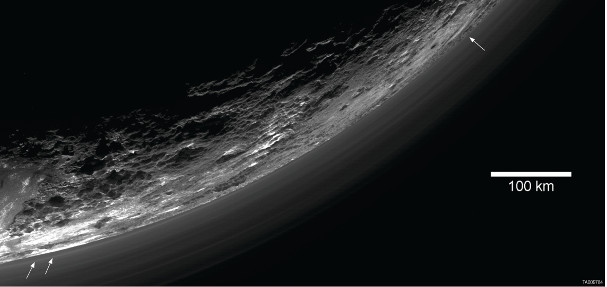
Occator Crater, 92 kilometres across and 4 kilometres deep, contains the brightest area on Ceres. Credit: NASA/JPL-Caltech/UCLA/MPS/DLR/IDA/PSI
More than space travel: NASA's impressive research record
23 March 2016

NASA/JPL-Caltech/UCLA/MPS/DLR/IDA/PSI
Occator Crater, 92 kilometres across and 4 kilometres deep, contains the brightest area on Ceres.
It’s been a big week for NASA scientists. On Tuesday, members of the team leading NASA’s Dawn spacecraft mission released the most detailed images yet of the dwarf planet Ceres. The images, taken by the craft at its lowest orbit around Ceres, captured a region known as Occator Crater. The images were revealed at a news conference at the 47th Lunar and Planetary Science Conference near Houston, Texas.
"Before Dawn began its intensive observations of Ceres last year, Occator Crater looked to be one large bright area. Now, with the latest close views, we can see complex features that provide new mysteries to investigate," said Ralf Jaumann, planetary scientist and Dawn co-investigator at the German Aerospace Center (DLR) in Berlin.
On Monday, at the same conference, members of NASA's New Horizons flyby of Pluto announced that data collected by the spacecraft strongly suggested that the dwarf planet once hosted liquid lakes and rivers. “We see what for all the world looks to a lot of our team like a former lake,” said Alan Stern, New Horizons principal investigator from the Southwest Research Institute in Boulder, Colorado.
The news briefing came just a few days after five papers published in Science detailed some extraordinary findings about Pluto – including that the dwarf planet has been geologically active throughout the past four billion years and that its upper atmosphere is much colder than studies from Earth suggested.

Layers of haze around Pluto were captured by New Horizons. Credit: NASA/Johns Hopkins University Applied Physics Laboratory/Southwest Research Institute/AAAS/Science
While these big ticket missions generate enormous interest and publicity for the space agency, less well-known is NASA’s record as one the United States' leading institutions publishing high-quality research, particularly in earth and environmental science.
In the Nature Index, NASA ranks second in the world for its contribution to earth and environmental papers and holds top position for publishing in those fields when compared to United States institutions. In 2015, NASA researchers contributed to 231 earth and environmental papers, including a Science paper that reported initial results of the Pluto system from New Horizons and a series of papers providing the best evidence yet of water on Mars.
When considering the size of NASA’s contribution to those papers, measured by weighted fractional count in the index, the agency ranks fourth in the world. The result includes the efforts of NASA’s affiliated institutions, joint institutions and consortia, such as NASA Goddard Space Flight Center in Maryland, the NASA Johnson Space Center in Houston, NASA Ames Research Center in California and the James Webb Space Telescope.
While NASA scientists contributed to a higher number of physics papers in 2015, the size of their contribution to those papers was smaller than for earth and environmental papers. This pattern suggests the agency had more researchers involved in those papers. Read an explainer of the merits of AC and WFC here.
It will come as no surprise that NASA's main collaborators on high-quality research in the index are institutions with a strong space or earth science focus, such as California Institute of Technology (Caltech), the University of Maryland, the Universities Space Research Association, the University of California Los Angeles (UCLA) and The Johns Hopkins University.
Want to read more? NASA: Let academic lead space science.
